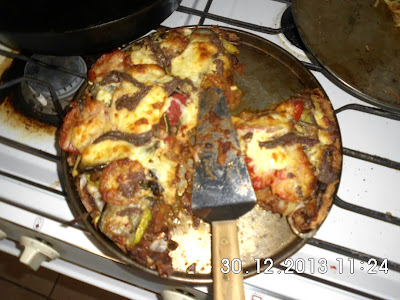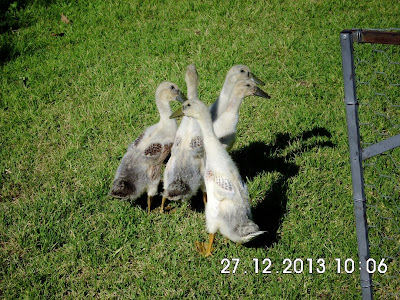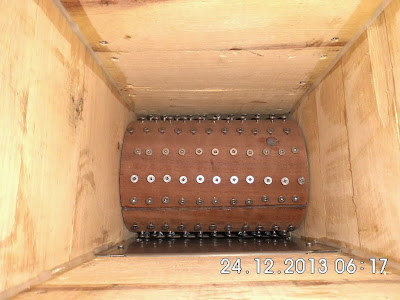That minor difference caused TA2 to
stop bubbling today. The next stage in this process was to
siphon (rack) the cider called TA2 from its primary fermentation
demijohn which has a large airspace into a smaller vessel to
eliminate as much surface area. This is done to minimise oxidation and prevent spoilage.
A guess was taken as to how much volume
was there was. A visual check indicated more than 15 litres but less
than 20 litres. Using simple siphoning tool the cider was gravity fed
into a 15 litre container. When it was full the remaining juice
filled a two litre demijohn and a 375ml bottle exactly (just luck).
With most of the air eliminated airlocks were attached to all three
containers. As the cider warms up to the ambient outside temperature
these containers will most probably start fermenting again albeit
very gently as any residual sugar is converted by the yeast to
alcohol and CO2.
 |
| The smallest container has a slightly different colour as there are still some suspended solids. As it settles out it will be racked into a yet smaller vessel. |
There was some sludge in the original
container which is known as gross lees i.e. the expired yeast cells
and any pulp which made it through the coarse filter during pressing.
As the cider completely finishes its fermentation it will gradually
clear as the remaining yeast and any other suspended material settles
to the bottom.
Once this occurs the cider will be
siphoned into 375 ml bottles with some sugar added and crown sealed.
The added sugar will ferment and force CO2 into the liquid creating a
sparkling cider. There will be a small amount of debris resulting
from this second fermentation. It can be either drunk or as most
people do carefully decant their cider into a glass leaving the
sludge behind.
The cider will have a distinct apple
nose as a result of the cool, slow fermentation. The purity of the
original juice provides a distinct apple flavour. The acidity is such
that it will have a crisp refreshing finish.
On the baby front the Ferds received this Christmas present and are starting to show interest. One of the five has a voice change and makes a distinct quack. Ahh children growing up.
















































